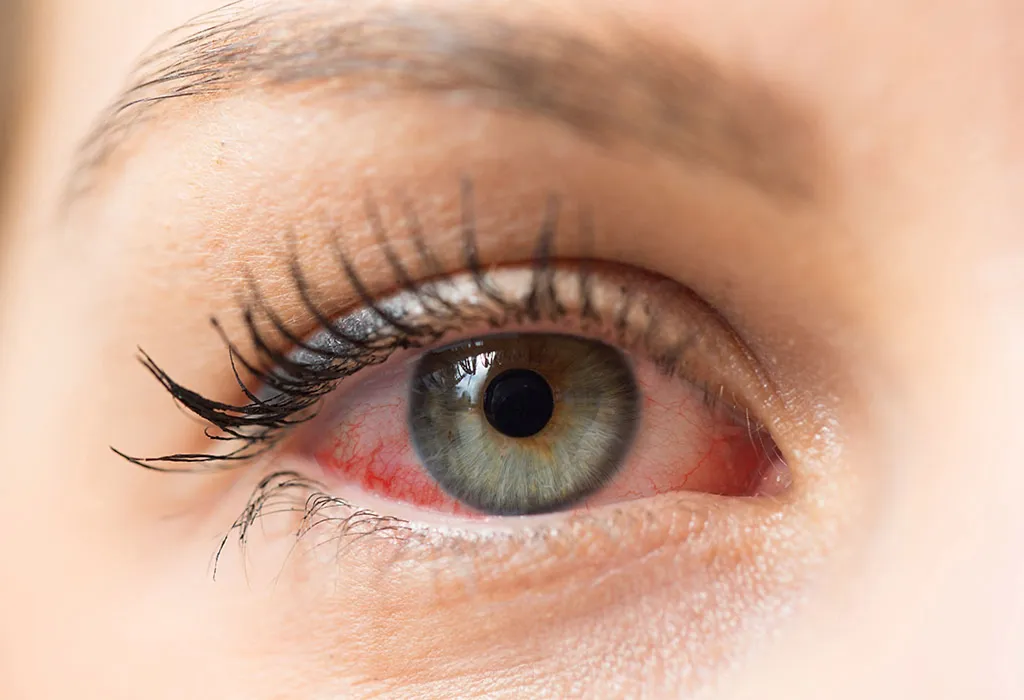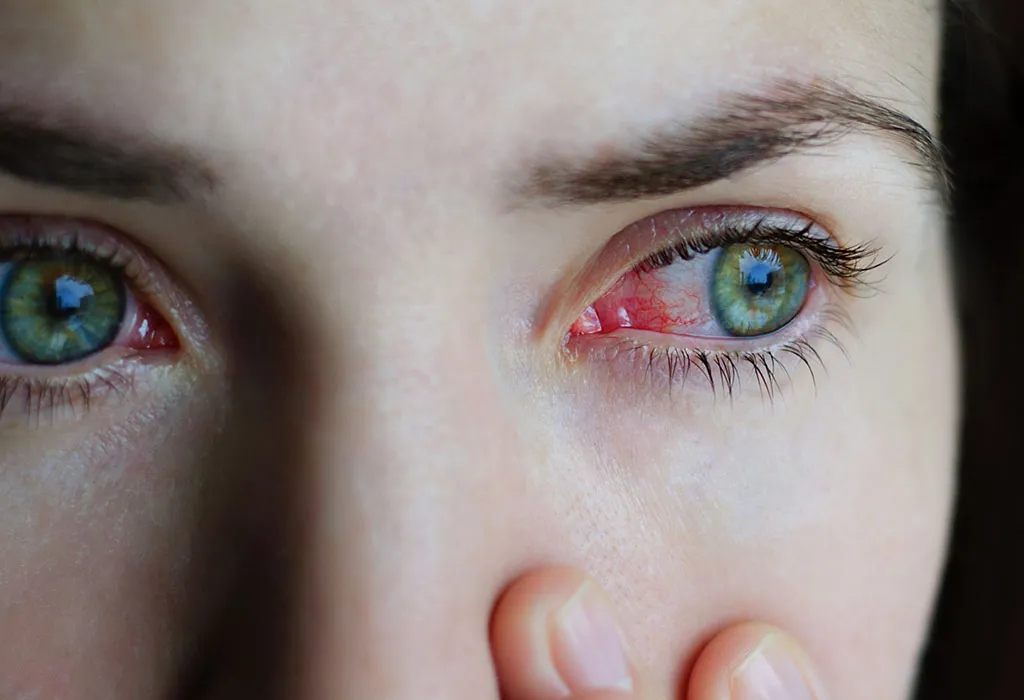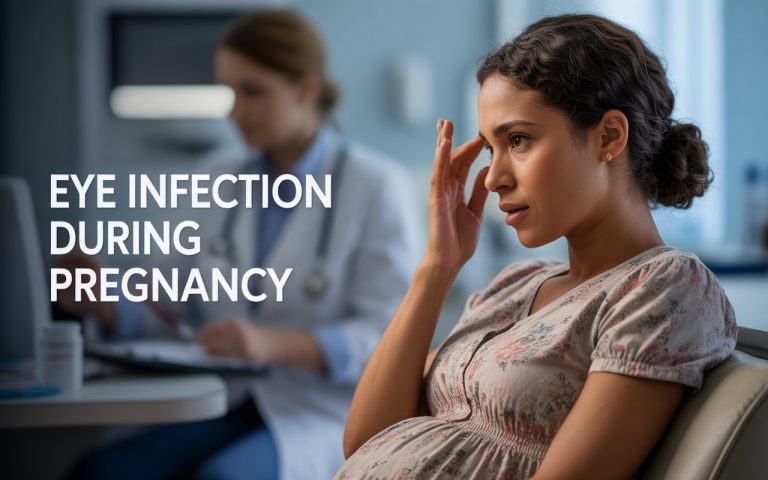Eye Infection During Pregnancy – Causes, Precautions, and Treatment
- What Are the Causes of Eye Infection in Pregnancy?
- Eye Infections Pregnant Ladies Are Likely to Experience
- Tips to Take Care of Eye Infections During Pregnancy
- When to Contact a Doctor?
- FAQs
During pregnancy, it is common for some women to experience eye problems. Pregnancy is the time when women go through a lot of physical and hormonal changes as they prepare for childbirth and nursing. The changing pregnancy hormones and augmented blood circulation may make pregnant women susceptible to infections, and they may develop dry or watery eyes. Although most of the eye infections during pregnancy disappear on their own, they may cause discomfort to the expectant mother. In this article, we shall talk about the kind of eye issues pregnant women are most likely to experience and how they can deal with it.
What Are the Causes of Eye Infection in Pregnancy?
Eye infections during pregnancy can be concerning for expectant mothers, as hormonal and immune system changes can make them more susceptible to such conditions. Understanding the causes of eye infections during this time is crucial for prevention and proper treatment.
1. Hormonal Changes
During pregnancy, significant hormonal fluctuations occur, particularly with increased levels of estrogen and progesterone. These hormonal changes can affect the composition and production of tears, leading to dry eyes. Dryness can make the eyes more prone to irritation and infection because the protective tear film is compromised, making it easier for bacteria and viruses to take hold.
2. Weakened Immune System
To protect the developing fetus, a pregnant woman’s immune system is naturally suppressed. This immunosuppression reduces the body’s ability to fight off infections, including those that can affect the eyes. A weakened immune system can make the eyes more susceptible to bacterial and viral infections that the body might otherwise fend off more effectively.
3. Allergies
Pregnancy can heighten sensitivity to allergens like pollen, dust, and pet dander. These allergens can trigger allergic reactions, causing symptoms such as itching, redness, and tearing. When pregnant women rub their eyes to alleviate the discomfort caused by allergies, they risk introducing bacteria or viruses into the eye, leading to infections such as conjunctivitis.
4. Contact Lens Use
Many women wear contact lenses, which can be a source of eye infections if not properly maintained. During pregnancy, changes in the shape of the eye or variations in vision can make wearing contact lenses less comfortable. Discomfort might lead to improper use or reduced hygiene practices, such as inadequate cleaning or over-wearing lenses, increasing the risk of eye infections.
5. Poor Hygiene
Maintaining proper hygiene is essential to prevent eye infections, especially during pregnancy when the immune system is compromised. Touching the eyes with unwashed hands can transfer bacteria and viruses to the eye area. Additionally, using contaminated makeup or not properly cleaning contact lenses can further increase the risk of eye infections.
6. Environmental Factors
Pregnant women might be more sensitive to environmental factors such as pollutants, smoke, and wind. Exposure to these irritants can exacerbate existing eye problems and increase the risk of developing infections. For example, smoke can irritate the eyes, leading to rubbing and potential introduction of infectious agents.
7. Pre-existing Eye Conditions
Women with pre-existing eye conditions such as blepharitis (inflammation of the eyelid) or chronic dry eye are at a higher risk of developing eye infections during pregnancy. These conditions can be exacerbated by hormonal changes and a weakened immune system, making it easier for infections to develop and spread.
8. Viral and Bacterial Infections
Common infections such as conjunctivitis (pink eye), which can be viral or bacterial, might occur more frequently during pregnancy. The combination of a weakened immune system and other contributing factors, such as increased exposure to allergens and irritants, makes pregnant women more vulnerable to these types of infections. Proper hygiene and prompt treatment are essential to prevent complications.
Eye Infections Pregnant Ladies Are Likely to Experience
Pink eye during pregnancy is most likely to happen due to physical and hormonal changes that occur during pregnancy. Let’s take a look at possible eye infections that can happen during pregnancy.
1. Dry Eyes
Dry eyes during pregnancy can cause redness, discomfort, and increased sensitivity to light due to hormonal changes (1).

Signs and Symptoms
- Redness in the eyes
- Burning sensation
- Sensitivity to sunlight
- Eyes feeling gritty or sandy
Treatment
- Use mild, doctor-recommended eye drops
- Avoid environments that can exacerbate dryness (e.g., wind, dry air)
Care
- Stay hydrated
- Use a humidifier at home
- Avoid prolonged use of digital screens
2. Weak Eyesight
Pregnancy-related fluid retention can lead to temporary changes in vision, necessitating adjustments in eyewear (2).

Signs and Symptoms
- Blurred vision
- Difficulty focusing
- Frequent changes in vision clarity
Treatment
- Switch from contact lenses to glasses if discomfort arises
- Consult an eye doctor for appropriate corrective measures
Care
- Monitor vision changes regularly
- Avoid straining eyes, take frequent breaks when using screens
- Maintain a healthy diet rich in vitamins A and E
3. Conjunctivitis or Pink Eye
Conjunctivitis in pregnancy, characterized by redness and irritation, can be caused by infections or allergies and requires prompt treatment to prevent spreading (3).

Signs and Symptoms
- Red, bloodshot eyes
- Pain and irritation
- Swelling and itching
- Watery discharge
Treatment
- Use prescribed antibiotics if bacterial infection is confirmed
- Apply a cool washcloth for relief
Care
- Maintain good hygiene, avoid touching or rubbing eyes
- Use separate towels to prevent spreading the infection
- Follow the doctor’s recommendations strictly
4. Puffiness
Commonly caused by water retention, puffiness around the eyes in pregnancy can be managed with dietary adjustments and cold compresses.
Signs and Symptoms
- Swollen eyelids
- Puffy appearance around the eyes
Treatment
- Reduce salt and caffeine intake
- Use cold compresses to reduce swelling
Care
- Stay well-hydrated
- Elevate head during sleep
- Monitor diet to manage fluid retention
5. Styes
Styes are painful, red lumps that appear on the edge of the eyelid, often caused by bacterial infections of the oil glands (4).
Signs and Symptoms
- Painful red lump on the eyelid
- Swelling of the eyelid
- Pus-filled bump
Treatment
- Apply warm compresses to the affected area
- Use over-the-counter pain relievers if necessary
Care
- Avoid squeezing or popping the stye
- Keep the eye area clean
- Use antibiotic ointments if prescribed by a doctor
6. Corneal Infections
Corneal infections can occur due to various reasons, including wearing contact lenses for too long or improper lens hygiene (5).
Signs and Symptoms
- Severe eye pain
- Redness in the eye
- Blurred vision
- Sensitivity to light
Treatment
- Immediate medical attention and prescribed antibiotic or antifungal eye drops
- Avoid wearing contact lenses during the infection
Care
- Follow proper contact lens hygiene practices
- Use preservative-free artificial tears
- Regularly visit an eye doctor for check-ups
We recommend you visit an eye specialist for immediate treatment of the eye infection. However, you will need to take additional care to bring about faster healing and to ensure you do not get the eye infection again.
Tips to Take Care of Eye Infections During Pregnancy
Here are some tips to help you deal with eye issues during pregnancy:
1. Maintain Good Hygiene
Observing basic hygiene is the most important thing that can help prevent eye infections. Wash your hands frequently. Avoid touching or rubbing your eyes. It is also not a good idea to share towels.
2. Cold Water Splashes
Splashing or washing your eyes with cold water several times a day may eradicate the presence of foreign bodies and bring relief from irritation and puffiness. Putting a cold pack on the infected eye can also help soothe the dilated blood vessels in the eye.

3. Warm Compress
Gently applying a warm compress to the affected eye at regular intervals can help ease some pain and inflammation.
4. Avoid Eye Makeup
If you are prone to allergies, it is best to avoid using eye makeup during pregnancy to avoid eye infections.
5. Protection for Eyes
Always wear good sunglasses when stepping out to protect your eyes from harmful UV rays of the sun, dust, and other pollutants.
6. Avoid Contact Lenses
As much as possible, avoid wearing contact lenses because dry eyes and infections can worsen the situation and increase the discomfort or pain. For a while, or at least till the eyesight is back to normal, wear glasses instead.
When to Contact a Doctor?
Contact a healthcare professional immediately if you experience redness, swelling, blurred vision, excessive tearing, or eye discomfort.
FAQs
1. Can pregnancy affect the severity of pre-existing eye conditions?
Yes, hormonal changes and immune system adjustments during pregnancy can exacerbate pre-existing eye conditions such as dry eye syndrome or uveitis.
2. Are eye infections during pregnancy more likely to spread to the baby?
Generally, eye infections like conjunctivitis (pink eye) are unlikely to spread to the fetus. However, maintaining good hygiene and promptly treating infections can reduce any potential risks.
3. Can eye infections during pregnancy affect labour and delivery?
In most cases, uncomplicated eye infections in pregnancy do not affect labour and delivery. However, severe infections requiring systemic antibiotics might be a concern and should be managed under medical supervision.
This was all about eye infection and pregnancy. An eye infection during pregnancy is usually a temporary condition that may resolve on its own after delivery. During pregnancy, self-medication or taking over-the-counter eye drops should be avoided to prevent any probable pregnancy complications. One has to be careful while taking medication, especially antibiotics, during pregnancy. So, it is always desirable to consult a medical practitioner for the treatment of eye infections during pregnancy.
Also Read:
Dark Circles during Pregnancy
Eye Twitching while Pregnant
Infections That Can Affect Your Pregnancy
Viral Infections That Might Affect You when Pregnant
Was This Article Helpful?
1. National Library of Medicine – Pregnancy and the Eye (Turkish Journal of Ophthalmology)
2. Cleveland Clinic – Blurry Vision While Pregnant
3. CDC – Conjunctivitis (Pink Eye); CDC
5. Harvard Health Publishing – Keratitis
6. PubMed Central – Pregnancy and Infection (The New England Journal of Medicine)
7. Review of Ophthalmology – Hormones in Dry-Eye: A Delicate Balance























